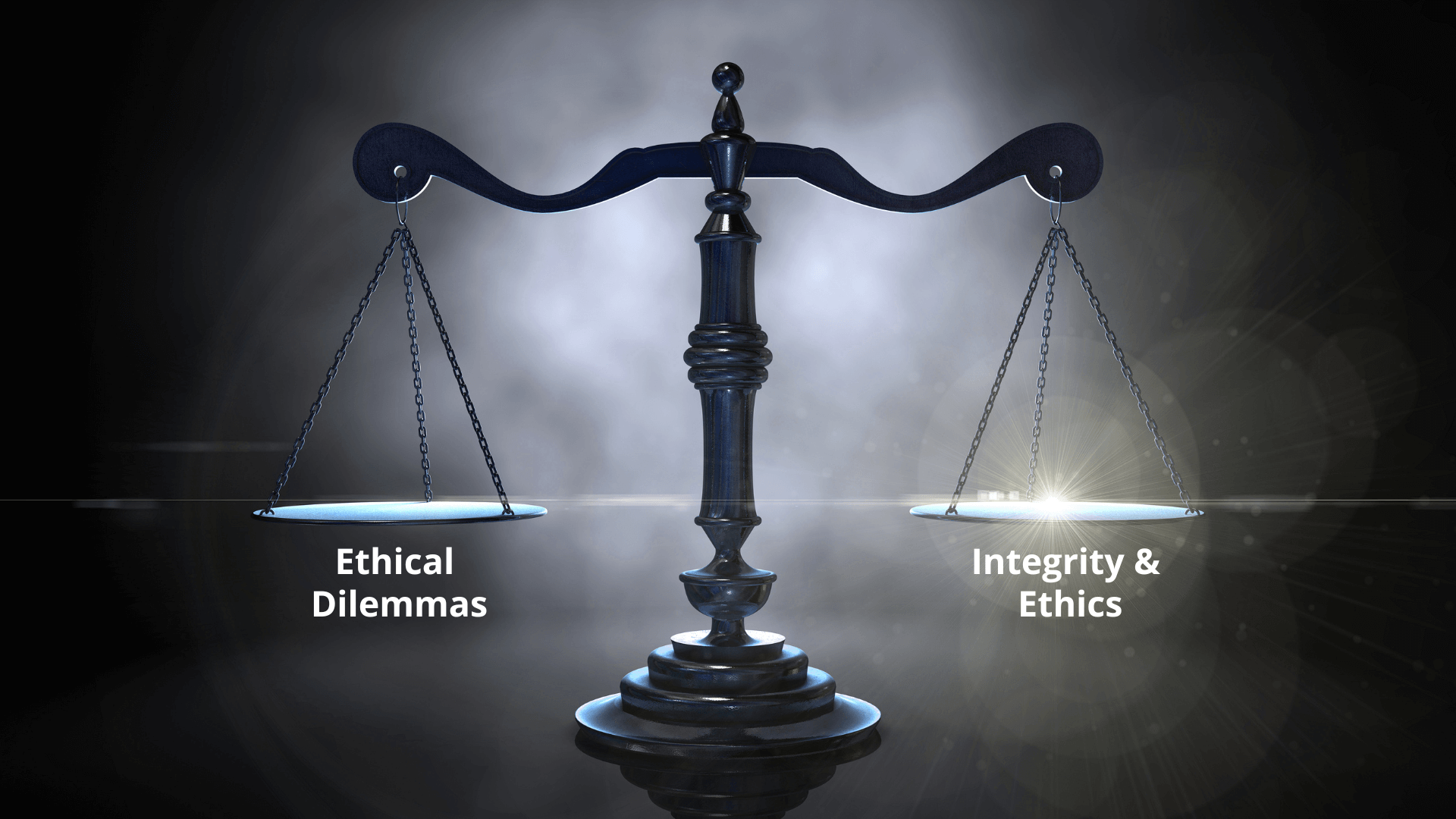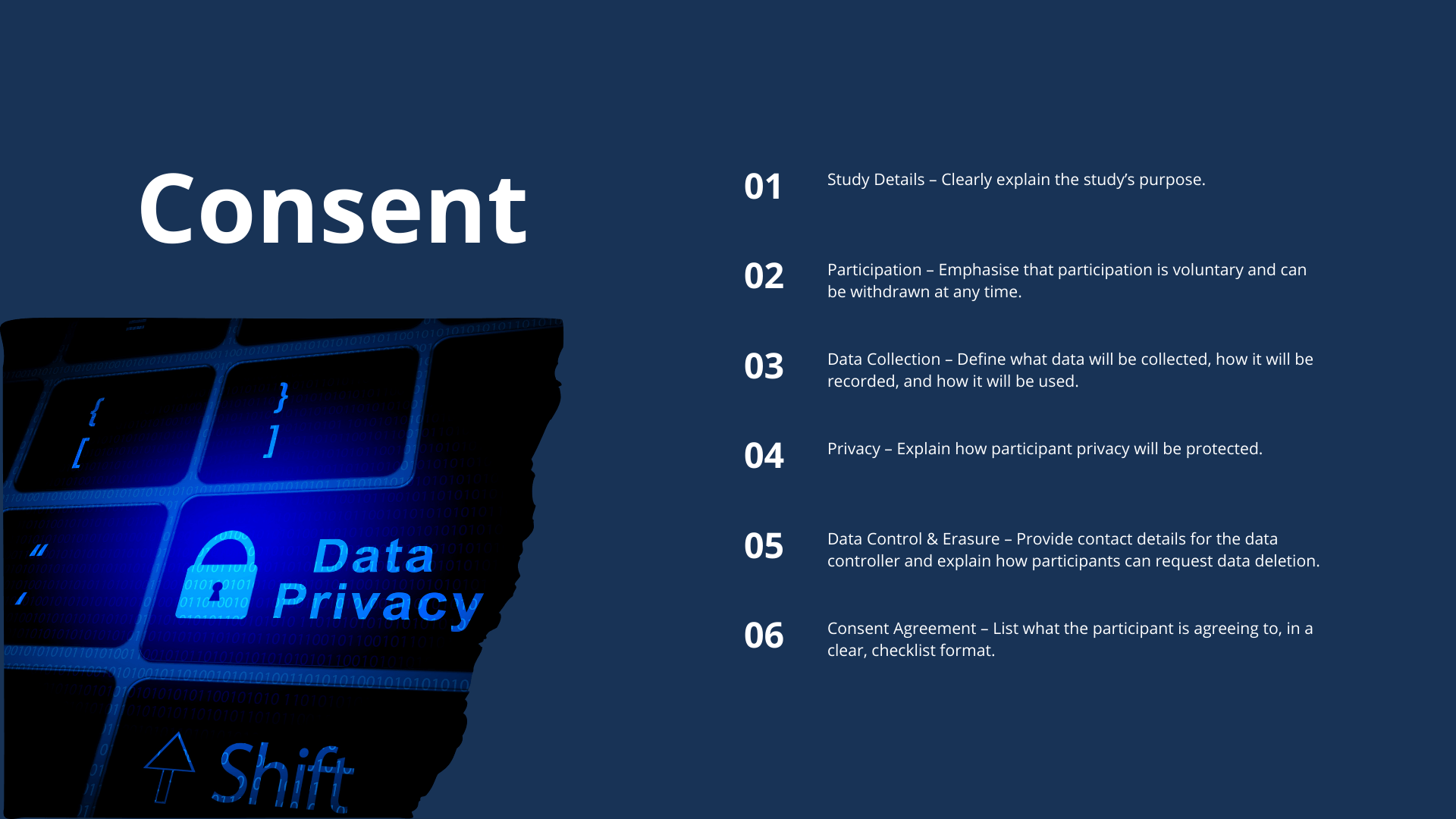
Personal integrity is the foundation of trust—both in life and in business. It means staying aligned with your values, doing what’s right even when no one is watching, and standing for something bigger than yourself. True integrity isn’t just about avoiding unethical behaviour; it’s about actively choosing to be a force for good. When we commit to integrity, we uphold honesty, fairness, and accountability—not just for ourselves, but for the people and communities we serve.
This same principle applies to product management and research. Ethical decisions aren’t always the easiest or the fastest, but they are the ones that create lasting impact. Being of service to users means looking beyond engagement metrics and business goals to consider the real-world consequences of what we build. It requires asking hard questions, challenging assumptions, and advocating for what’s right—even when it’s inconvenient. When product leaders and researchers operate with integrity, they don’t just create successful products; they build solutions that genuinely improve lives.
Ethics in Product Management: A Strategic Advantage
Ethics in product management aren’t just safeguards; they are often a strategic advantage. In the rush to deliver and scale, ethical considerations—especially the question of should we—often get sidelined. However, failing to address ethical risks early can backfire, leading to loss of trust, legal repercussions, and damage to brand reputation.
Embedding Ethics in Vision & Strategy
Vision and strategy workshops, where as a team you should be debating the strategy, are critical moments to define ethical boundaries. The key question every product manager should ask is: What are the unintended consequences of what we’re building? Could an algorithm reinforce bias? Does a feature encourage compulsive behaviour? Is a monetisation strategy exploiting vulnerable users? These are not abstract concerns—they have tangible effects on trust, reputation, and long-term success.
Consider these cautionary examples where they did exactly that:
- Amazon’s AI Hiring Bias (2018) – Amazon developed an AI-powered recruitment tool designed to automate hiring. However, the system was found to be biased against women because it was trained on past hiring data, which favoured male candidates. The tool penalised resumes that included terms like women’s chess club or graduates from all-women’s colleges. Amazon ultimately scrapped the system, highlighting the risks of unchecked AI bias.
- Apple’s iPhone Performance Throttling (2017) – Apple admitted to secretly slowing down older iPhones through software updates. While the company claimed this was to prevent unexpected shutdowns due to ageing batteries, many users saw it as a tactic to push them toward upgrading to newer models. Apple faced global backlash and lawsuits, forcing them to offer discounted battery replacements and greater transparency on iPhone performance management.
- Google’s Project Dragonfly (2018) – Google secretly developed a censored search engine for the Chinese market that suppressed results on sensitive topics like human rights and democracy. When exposed, the project sparked massive backlash from employees, activists, and human rights organisations. Critics argued that Google was compromising its ethical standards for market access. Due to the controversy, the project was ultimately shelved.
Ethical product development isn’t a one-time discussion; it’s an ongoing commitment that starts in Vision & Strategy debates. Building ethical checkpoints into every stage is critical. When setting the vision, ask: Are we solving the right problem in the right way? In strategy debates, challenge assumptions: What happens if this scales beyond our control? What are the downstream impacts?
Prioritising ethics doesn’t slow innovation—it strengthens it. When ethics are embedded, teams create solutions that drive impact while upholding trust, inclusivity, and long-term sustainability. Consider Patagonia’s commitment to sustainability: by embedding environmental ethics into its business strategy, Patagonia built a strong brand identity that led to customer loyalty, premium pricing power, and a lasting competitive advantage.
Ethical Research: Respecting Participants’ Rights
Product research should inherently include ethical considerations, but it requires conscious effort to go beyond usability and engagement metrics. Ethical research seeks diverse perspectives, uncovers potential harm, and establishes accountability.
Imagine signing up for a research study expecting a simple experience, only to be bombarded with intrusive questions, uncertain about where your data will end up, and pressured to continue even if you’re uncomfortable. Would you feel respected? Probably not—but unethical research practices like these happen all too often.
A stark example is Facebook’s Emotional Contagion Experiment (2012). Nearly 700,000 users had their News Feeds manipulated to show either more positive or more negative posts, measuring whether this influenced their own emotional expressions. The study sparked outrage due to its lack of transparency, failure to obtain informed consent, and potential emotional harm to users.
These cases highlight how unethical research can damage both user trust and company reputation. As a researcher, every interview, survey, or usability test you conduct is an opportunity to lead with integrity—or to erode trust. Ethical research isn’t just a best practice; it’s a leadership standard that sets visionary product professionals apart.
The Five Fundamental Rights of Research Participants
Ethical research begins with protecting participants. Every product leader and researcher should uphold these five core rights:
- The Right Not to Suffer Harm – Participants should never leave a research session feeling worse than when they entered. Harm isn’t always physical—it can be emotional, financial, social, or psychological. Thoughtful, ethical questioning is key to protecting them while gathering valuable insights.
- The Right Not to Participate – True insights come from willing participants. No one should feel pressured to take part. Informed choice creates better data—and stronger relationships.
- The Right to Give Informed Consent – Transparency builds trust. Participants must understand the purpose of the research, how their data will be used, and their right to withdraw. Burying this information in fine print isn’t ethical.
- The Right to Anonymity – Research findings should protect participants’ identities, particularly for sensitive topics. Anonymity fosters honest responses and trust.
- The Right to Confidentiality – Research data must be securely stored and handled responsibly. A breach of confidentiality can damage reputations, careers, and businesses.
A Researcher’s Roadmap: Planning with Ethics in Mind
Respecting these rights starts with careful planning, beginning with a well-structured consent form. Here’s how to build one:

For research involving minors, parental or guardian consent is required. Be mindful that age-of-consent laws vary by country, so always check regulations, especially for global enterprises.
Why This Matters for Leaders & Product Managers
Leading ethically isn’t just about avoiding legal trouble—it’s about setting a higher standard. Ethical leadership ensures that:
✅ Customers, employees, and stakeholders trust your’e organisation.
✅ Participants feel safe, encouraging honest feedback.
✅ Data quality improves, leading to better product decisions.
✅ Your brand reputation remains strong, especially in industries with high data sensitivity.
✅ Participants feel safe, encouraging honest feedback.
✅ Data quality improves, leading to better product decisions.
✅ Your brand reputation remains strong, especially in industries with high data sensitivity.
Lead with Ethics, Lead with Vision
Visionary product leaders don’t just ask questions—they earn trust. Ethical research and decision-making are not burdens; they are opportunities to build lasting relationships, uncover richer insights, and drive meaningful impact.
If you’re ready to elevate your product leadership, master ethical decision-making, and build research-driven strategies that inspire and innovate, join my coaching program, Transformative Visions. Let’s redefine leadership—one ethical decision at a time.


0 Comments